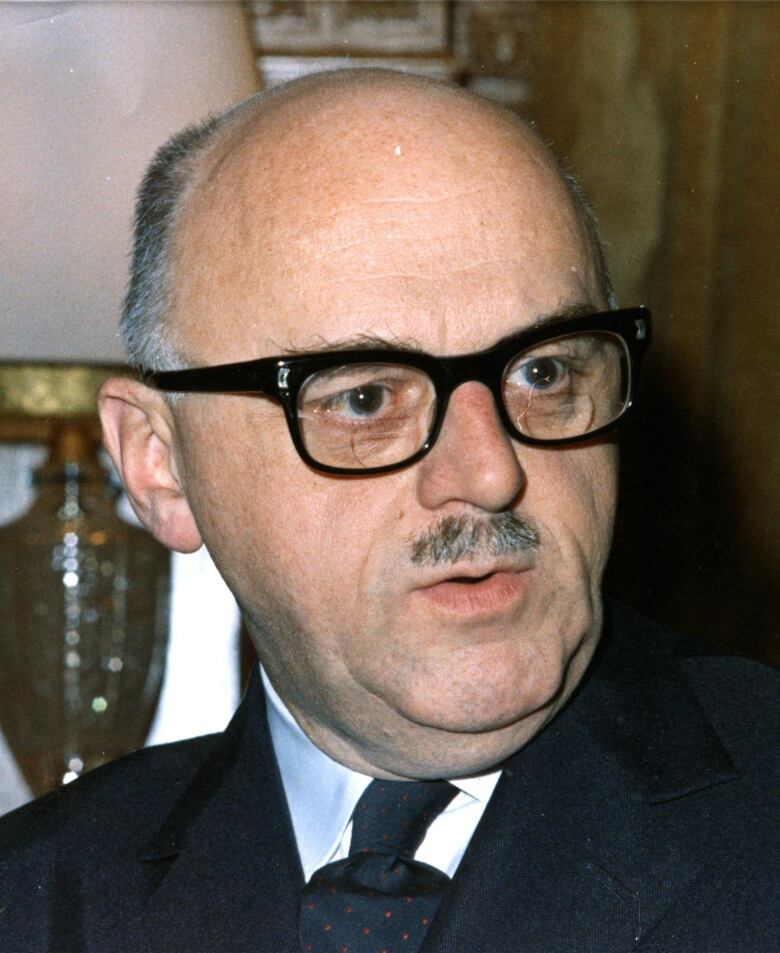Public washrooms make comeback in Montreal, 85 years after Camillien Houde's make-work initiative
Ville-Marie to spend $3.6M on public toilets downtown for 1st time since 1970s

Among the great running battles between progressives and conservatives in Montreal over the past 150 years has been the question of whether denizens should be able to relieve themselves in public.
The forces of progress scored a victory Tuesday evening when, at a Ville-Marie borough council meeting, Mayor Denis Coderre pushed aheadwith a plan to build a dozen public washrooms downtown.
Not since the late 1970s has the city had a functioning public toilet downtown.

One ofCoderre'spredecessors, Jean Drapeau, closed them ostensibly as part of a cost-cutting measure. But there may have been moral reasons at play as well.
Drapeau, infamously, had hundreds of trees razed onMount Royal, to discouragethe mountain frombeing used as a site for illicit sexual encounters.
Similar suspicions may have been involved in his decision to shutthe public toilets.
City officials, moreover, were concerned that some restrooms such as the one underneath Place-d'Armes were being used as gambling dens.
Montreal's golden age of public toilets
The closures marked the end of an era, the veritable golden age of public restrooms in Montreal.
In the late 19th century, the absence of city toilets become something of a polemic, a common topic of letters to Montreal newspapers, according to Nicolas Kenny's bookThe Feel of the City: Experiences of Urban Transformation.
Louis Laberge, a long-ago director of the Montreal health bureau, remarked in 1885 that this oversight reflected poorly on the city's reputation. Of the world's great cities, he wrote, only Montreal was without public washrooms.

"It is well known that men are compelled to patronize restaurants and saloons in order to have a chance to relieve themselves,"Laberge wrote in his Report on the Sanitary State of the City of Montreal for the Year 1910.
Finally, in 1913, the city opened the first of its "comfort stations" in Place Jacques-Cartier.
No mere pissoir, these public washroomswere designed to resemble "miniature palaces" and convey Montreal's status as a modern metropolis, Kenny writes in his book.
They served as information stations, places where you could get your shoes shinedor even place a telephone call.
Houde's camilliennes
But arguably the most memorable of Montreal's public toilets were the camilliennes, so named for the mayor who ordered their construction, Camillien Houde.
With the Depression in full swing,Houdehad a series of restrooms built as a public-works project. He quipped that the projectwould provide the unemployed with "two kinds of relief."
Designed by art-deco architect Jean-OmerMarchand, theywere found in key locations around the city, such asPlace-d'Armes,andVictoria and Viger squares.
The sovereignist intellectualJacquesFerronconsidered it a stroke of genius to locate one underthe statue of King Edward VII in Phillips Square. What more symbolic way, he wrote, to express Quebecers'sentiments about the Crown.
Many of these palaces to our basic functions have since been transformed and now serve other needs.
ThecamillienneinCabot Square has become theCaf Roundhouse. The ice cream parlour inSt. Louis Squarewas once the camillienne located in VigerSquare.
Opening up public space
The models that Montreal will build this time around aren't likely to be as opulent as those of yesteryear. But they will be self-cleaning, cutting down on maintenance costs. In all,Ville-Marie is allotting $3.6 million for the project.

More importantly, though, they will help democratizethe city's public spaces.
As several observers have pointed out, the presence of toilets makes urban space more comfortable forthose who have limitedcontrol of their bladder or intestines, such as the elderly or people with diabetes.
Think, too, of pregnant womenor the homeless, or, well, anyof us, all of whom have to go at some point or another.
A small measure, perhaps, but one that reduces some of the anxiety that comes withbeing in public, allowing the city to be shared more widely.












_(720p).jpg)


 OFFICIAL HD MUSIC VIDEO.jpg)
.jpg)



























































































